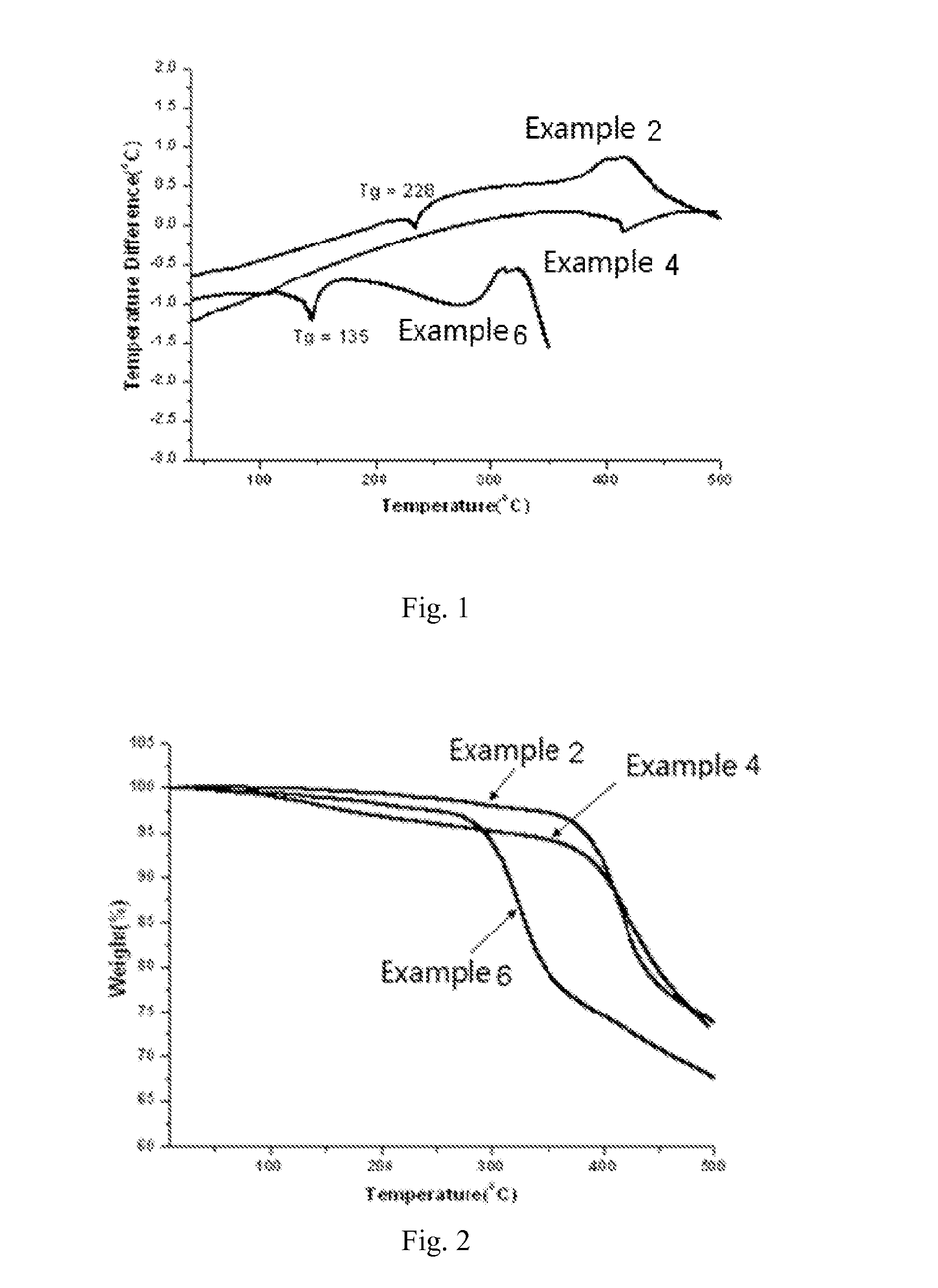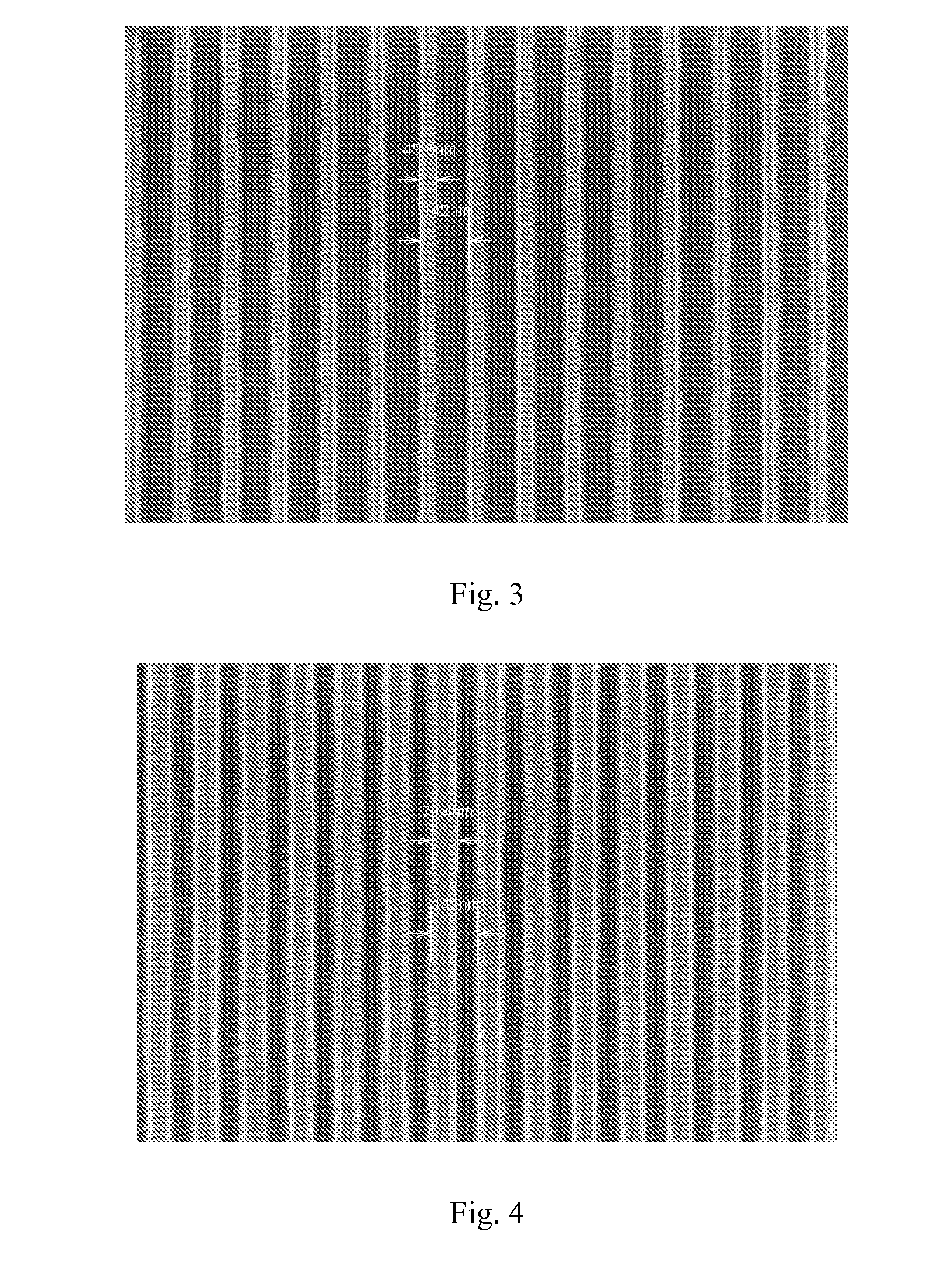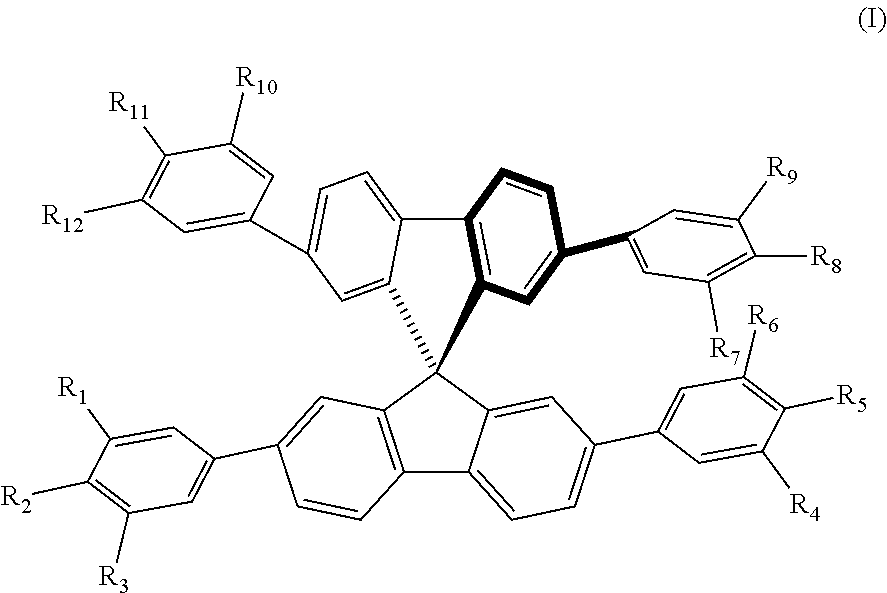Molecular glass of spirofluorene derivative, preparation method thereof and use thereof in photo-etching
a technology of spirofluorene and spirofluorene, which is applied in the field of material technology, can solve the problems that polymeric materials cannot meet the demand of fine photolithography, and achieve the effects of good thermal stability of spirofluorene, good film-forming properties, and high glass transition temperatur
- Summary
- Abstract
- Description
- Claims
- Application Information
AI Technical Summary
Benefits of technology
Problems solved by technology
Method used
Image
Examples
example 1
[0047]Preparing 2,7,2′,7′-four-(3,5-dimethoxyphenyl)-9,9′-spirofluorene, wherein the synthetic route is as follows:
[0048]As follows are specific steps of: adding Pb(OAc)2 (15.5 mg, 0.05 mmol, 0.1 eq), a ligand 2-dicyclohexyl-phosphorus-2′,6′-dimethoxy-biphenyl-S-phos (49.8 mg, 0.1 mmol, 0.2 eq) into a 50 mL Schlenk reaction flask; performing a cycle of vacuumizing and filling nitrogen gas in the flask for three times; adding dried and redistilled tetrahydrofuran (5 mL) into the reaction flask by a syringe; stirring at room temperature for 30 minutes to obtain a catalyst solution and sealing the catalyst solution for use. The steps further comprise adding 2,7,2′,7′-tetrabromo-spirofluorene (316.0 mg, 0.5 mmol, 1.0 eq) and 3,5-dimethoxyphenyl pinacol borane (660.0 mg, 2.5 mmol, 5.0 eq) into another 100 ml Schlenk reaction flask, performing a cycle of vacuumizing and filling nitrogen gas in the flask for three times; adding NaOH solution (1 ml, 5M), tetrahydrofuran (2 ml) and the above...
example 2
[0049]Preparing 2,7,2′,7 ∝-four-(3,4,5-trimethoxyphenyl)-9,9′-spirofluorene, wherein the synthetic route is as follows:
[0050]As follows are specific steps of: adding Pb(OAc)2 (15.5 mg, 0.05 mmol, 0.1 eq), a ligand 2-dicyclohexyl-phosphorus-2′,6′-dimethoxy-biphenyl-S-phos (49.8 mg, 0.1 mmol, 0.2 eq) into a 50 mL Schlenk reaction flask, performing a cycle of vacuumizing and filling nitrogen gas in the flask for three times; adding dried and redistilled tetrahydrofuran (5 mL) into the reaction flask by a syringe; stirring at room temperature for 30 minutes to obtain a catalyst solution and sealing the catalyst solution for use. The steps further comprise adding 2,7,2′,7′-tetrabromo-spirofluorene (316.0 mg, 0.5 mmol, 1.0 eq) and 3,4,5-trimethoxyphenyl pinacol borane (735.0 mg, 2.5 mmol, 5.0 eq) into another 100 ml Schlenk reaction flask; performing a cycle of vacuumizing and filling nitrogen gas in the flask for three times; adding a NaOH solution (1 ml, 5M), tetrahydrofuran (2 ml) and ...
example 3
[0051]Preparing 2,7,2′,7′-four-(3,5-dihydroxyl phenyl)-9,9′-spirofluorene, wherein the synthetic route is as follows:
[0052]As follows are specific steps of: adding 2,7,2′,7′-four-(3,5-dimethoxyphenyl)-9,9′-spirofluorene (1.0 g, 1.16 mmol, 1.0 eq) and 50 ml dichloromethane into a 250 ml three-necked flask; dissolving the same in nitrogen atmosphere; instilling a methylene chloride solution of boron tribromide (1M, 10 ml, 9.0 eq) into the reaction solution by a syringe at −78° C. to produce a reaction for 1 hour; heating the reaction solution up to room temperature gradually and keeping the reaction at the room temperature for 12 hours; adding 10 ml water slowly into the reaction solution to quench the reaction; removing dichloromethane solvent by decompressing; filtering the remainder to obtain a pale yellow filter cake; washing the filter cake with water and dichloromethane, respectively, so as to obtain a solid; precipitating the obtained solid with methanol / water for three times t...
PUM
| Property | Measurement | Unit |
|---|---|---|
| molecular weight | aaaaa | aaaaa |
| Tg | aaaaa | aaaaa |
| glass transition temperature | aaaaa | aaaaa |
Abstract
Description
Claims
Application Information
 Login to view more
Login to view more - R&D Engineer
- R&D Manager
- IP Professional
- Industry Leading Data Capabilities
- Powerful AI technology
- Patent DNA Extraction
Browse by: Latest US Patents, China's latest patents, Technical Efficacy Thesaurus, Application Domain, Technology Topic.
© 2024 PatSnap. All rights reserved.Legal|Privacy policy|Modern Slavery Act Transparency Statement|Sitemap



